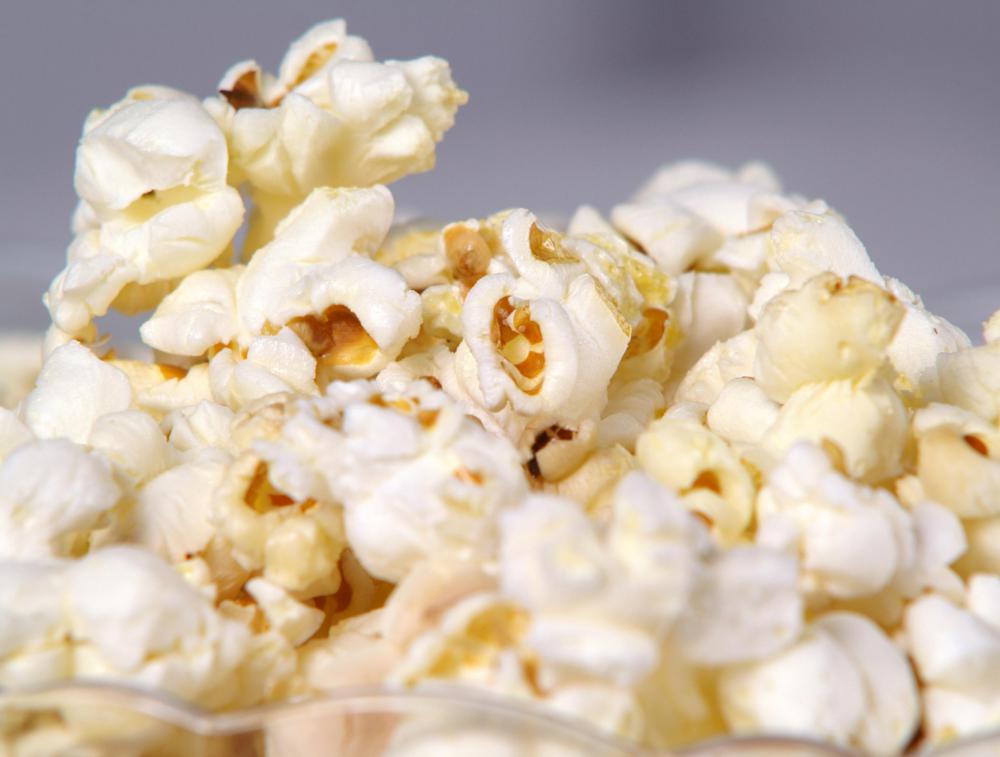At AllThingsNature, we're committed to delivering accurate, trustworthy information. Our expert-authored content is rigorously fact-checked and sourced from credible authorities. Discover how we uphold the highest standards in providing you with reliable knowledge.
What Are the Different Varieties of Maize?
More than 50 varieties of maize exist, but are generally divided into five major categories: flint corn; dent corn; flour corn; popcorn; and sweet corn. Each of the varieties of maize is based on kernel size, color, and the amount of starch within each kernel. Popcorn and flour corn represent the two oldest varieties of maize used as food, and botanists believe all types of maize share a common origin.
Flint corn, also called Indian corn, grows in many colors, ranging from red to white kernels. It is mainly used as livestock feed or ground into corn meal because of its thick, outer shell covering a small, starchy center. Flint corn is similar to dent corn.

Dent corn is called field corn in some regions. As these varieties of maize dry out, the ends become dented. Dent corn is also used to feed livestock and ground into corn meal. It is also the variety converted into corn oil and corn syrup, and contains 4 percent sugar. Dent corn has emerged as a source of biofuel as concerns about the environment led to research on new fuel sources.

Flour corn consists mainly of starch covered by a thin outer shell. This is one of the varieties of maize used to create corn flour used in baked goods. Flour corn is easy to grind, making it an ideal source of flour. In the past, this type of corn was roasted until the kernels split open, exposing the soft interior. It could be stored for months without spoiling, making it a good source of nutrition during winter months.

Popcorn varieties of maize were used as early as 3600 B.C. by the Maya and Aztec civilizations. A soft center with ample moisture causes the kernel to explode when exposed to heat. Popcorn kernels are smaller than other varieties of maize, and come in rice or pearl types, defined by shape.
Sweet corn represents the most common type consumed for flavor, eaten right off the cob, canned, or frozen. This variety contains about 10 percent sugar that quickly converts to starch after harvesting. Historians estimate this type of maize has been cultivated since the late 1700s.
All varieties of maize prefer high summer temperatures to allow ripening. They require ample amounts of water during the growing period to flourish and produce high yields. The yield depends on soil conditions in the region where corn is grown. American Indians depended on maize for a form of bread that made up a large part of their diets. They also fermented corn into an alcoholic beverage similar to beer.
Frequently Asked Questions
What are the main types of maize cultivated worldwide?
There are primarily four types of maize: dent corn, flint corn, sweet corn, and popcorn. Dent corn, characterized by a dent in the kernel, is commonly used for livestock feed and industrial products. Flint corn has a hard outer layer and is used similarly to dent corn. Sweet corn is consumed as a vegetable, prized for its sweetness. Popcorn has a hard exterior and a starchy interior that explodes when heated.
How does sweet corn differ from other maize varieties?
Sweet corn stands out due to its high sugar content, which is why it's favored as a food crop. Unlike field corn varieties like dent and flint, which are harvested when the kernels are dry and mature, sweet corn is picked while immature, during the milk stage, to ensure the kernels are tender and sweet. This variety is typically consumed directly as a vegetable, either on the cob or as kernels.
What is the significance of popcorn's unique popping ability?
Popcorn's ability to pop comes from its high moisture content sealed within a tough outer shell. When heated, the moisture turns into steam, and pressure builds until the kernel explosively expands, turning inside out. This transformation creates the fluffy, edible snack. Popcorn is the only type of maize that pops, making it a unique and popular variety.
Are there any nutritional differences among maize varieties?
Yes, nutritional content varies among maize types. Sweet corn is rich in sugar and has more vitamin B and C compared to field corn varieties. Popcorn offers dietary fiber and antioxidants. Field corn, including dent and flint, is higher in starch and is often used for animal feed or processed into cornmeal, corn oil, and other products, rather than being consumed directly.
How has maize been modified for different uses?
Maize has been selectively bred for specific traits to cater to different uses. For example, sweet corn has been bred for higher sugar content for human consumption, while field corn has been optimized for yield, pest resistance, and storage qualities for industrial and feed purposes. Biotechnology has also introduced genetically modified maize to enhance traits like herbicide resistance and nutritional content.
What environmental factors affect the growth of different maize varieties?
Maize varieties have diverse environmental requirements. Sweet corn thrives in warm, temperate climates with well-drained, fertile soil. Field corn varieties are more adaptable and can grow in a range of conditions but still prefer full sunlight and rich soil. Popcorn requires a longer growing season and more consistent moisture levels compared to other types. Proper soil, temperature, and moisture are crucial for optimal growth and yield.
AS FEATURED ON:
AS FEATURED ON:













Discuss this Article
Post your comments